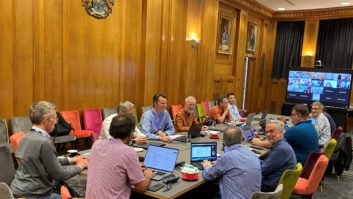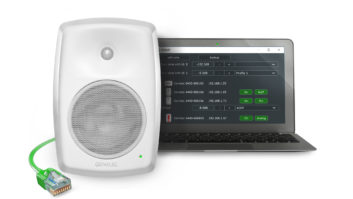
Xavtel marketing director Romano Cunsolo has been working in the pro-audio industry since 1988 when he started out as a freelancer at Dynacord. He went on to spend time with EV, Biamp and Apart Audio before joining Ateis Germany, and later Ateis Europe. At Xavtel, part of the PAX ProAV Group along with Ateis, Penton and Terracom, he is charged with “generating a clear message to the market that we will focus to serve our customers within various market segments with the best support and innovative, but ‘easy to use and install’, products”.
Xavtel offers both proprietary (Xavnet) and open (AVB) networking, as Cunsolo explains: “My experience of networked audio is that there is still no protocol offering both low latency and lots of channels of audio and video without a royalty fee. That means there is always high cost involved.
The second issue is that there is no real standard yet, and AVB is not 100% ready in terms of dealing with audio and video. But the biggest difference is that AVB is a star wired topology and requires external AVB hardware. The Xavnet is a loop-wired, fully redundant network, which is much cheaper and really fast, and therefore we allow the consultants for large projects to decide which way they want to go. With the MIRA System we even go one step further: here we have two network card slots to even use both network protocols simultaneously.”
The proprietary technologies were developed in response to market needs: “Looking at today’s projects the infrastructure of a network and the topology is crucial to the layout of the AV and control systems. Therefore a lot of consultants ask for easy and less expensive solutions. Plus redundancy is already included in our Xavnet.”
He continues: “We need to deal with real time audio and there are a lot of applications asking for a large number of audio channels. The more channels there are the easier it gets to program larger systems, due to the fact that they do not need to be mixed together and then sent via a ‘bottleneck’ to the network. Within AV, of course, the video part has to be time aligned with the real time audio, and that´s what we were able to do within the MIRA system.”
So what applications have the most to gain from these networks?
“Large-scale projects in particular have the most to gain from these networks, and also any project that needs to be networked over distance. Just take a legislative or a court project, for example; think about all network issues with recording all channels from multiple rooms. These channels have to be totally independent over the network, as well as handling paging and discussion facilities and all need to be controlled from single or multiple places. In addition these networks often need to incorporate video, conferencing and digital signage.”







